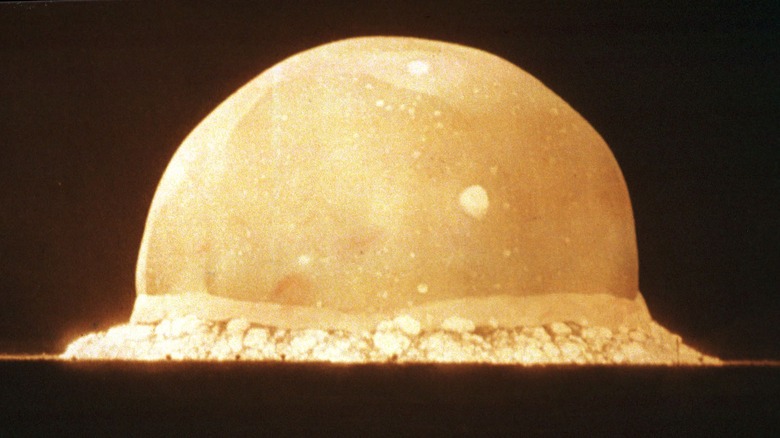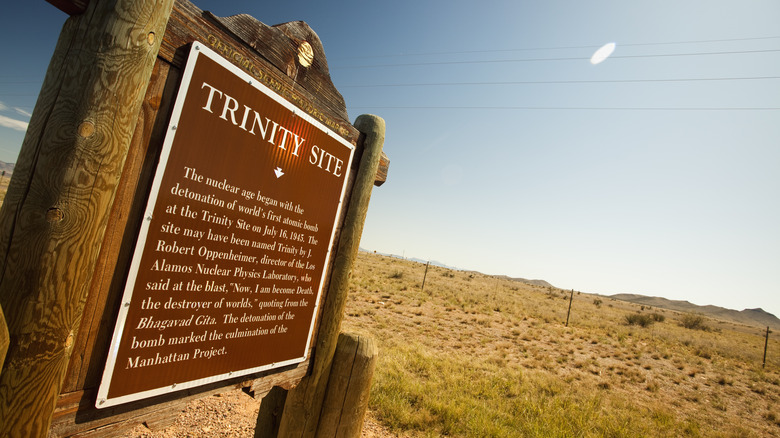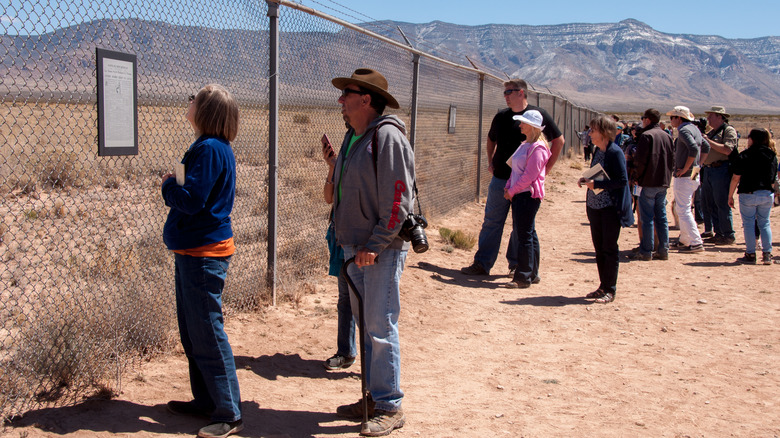The Real Reason The Trinity Test Site Is Only Open Twice A Year
Editor's note: A previous version of this story indicated that only the first 5,000 visitors would be allowed in, but the site doesn't have a maximum attendance allowance and they try to accommodate everyone as long as you're there early enough.
Unleashed in the dusty New Mexico desert in 1945, the Trinity Test was the culmination of the Manhattan Project. During the test, "Gadget," the first nuclear weapon ever detonated dazzled observers with its awesome power in a momentous triumph for U.S. scientists — albeit one with some pretty dark moral implications.
Those with a morbid sense of curiosity or simply an interest in history have long flocked to the Trinity Test Site for photographs. However, because it sits on an active military site — White Sands Missile Range – the site is only open to the public twice a year on "the first Saturday in April and the third Saturday in October" according to the National Park Service.
The El Paso Times reports that since the release of the hit film "Oppenheimer," visitor numbers are expected to rise dramatically, so it's important to arrive early. The gate closes pretty early in the day — 2:00 p.m. is the cutoff to get in, and the site closes for the day at 3:30 p.m. More than just a tourist attraction, the test site is still part of the largest military base in the U.S., a facility that has consistently been at the cutting edge of military innovation since the nuclear bomb was just an atomic glint in J.Robert Oppenheimer's eye.
What's at the Trinity Test site?
The test site itself is marked by a plaque that commemorates the explosion at ground zero, meaning that you can stand exactly where the bomb was detonated. Although unsurprisingly, the area has higher than average radiation levels it is still technically safe to visit, and the prohibition around visitor numbers has nothing to do with nuclear fallout.
In total, the park stretches over 51,500 acres and includes Ranch House, one of two old ranch buildings that were borrowed by the government to house the teams who exploded the atomic bomb. At the entrance to the site, visitors can also see the remains of "Jumbo," another bomb design that was shelved in favor of the "Gadget" bomb used in the Trinity Test. It has sat in the parking lot since 1976.
Upon arrival, lucky visitors will be offered a half a mile tour across the test area, where they can go "Trinitite" spotting in the desert. Trinitite is the glassy green substance created by the bomb when the desert sands melted at incredibly high temperatures. Although most of it was removed in the '50s, small pieces can still be spotted there today, glinting in the New Mexico sun.
What do they use it for?
Although the Trinity Test Site was made a tourist attraction as early as 1965, the area has never yet fallen out of use. The desert in which the bomb was detonated is part of a far larger complex — the aforementioned White Sands Missile Range. Today the military still uses the area for weapons and radar testing and according to the U.S. Army, an astonishing 42,000 missile tests have been carried out in the area since testing began. The Trinity Test Site is just a small part of the massive military site overall which stretches over an area the size of Rhode Island, approximately 3,421 square miles.
Those unable to make a trip to the Trinity Test Site may wish to visit the base anyway which has its own museum. However, visitors should be aware, they will be subject to heightened security, and the museum doesn't mess around — visitors must undergo a criminal background check before attempting to enter.


